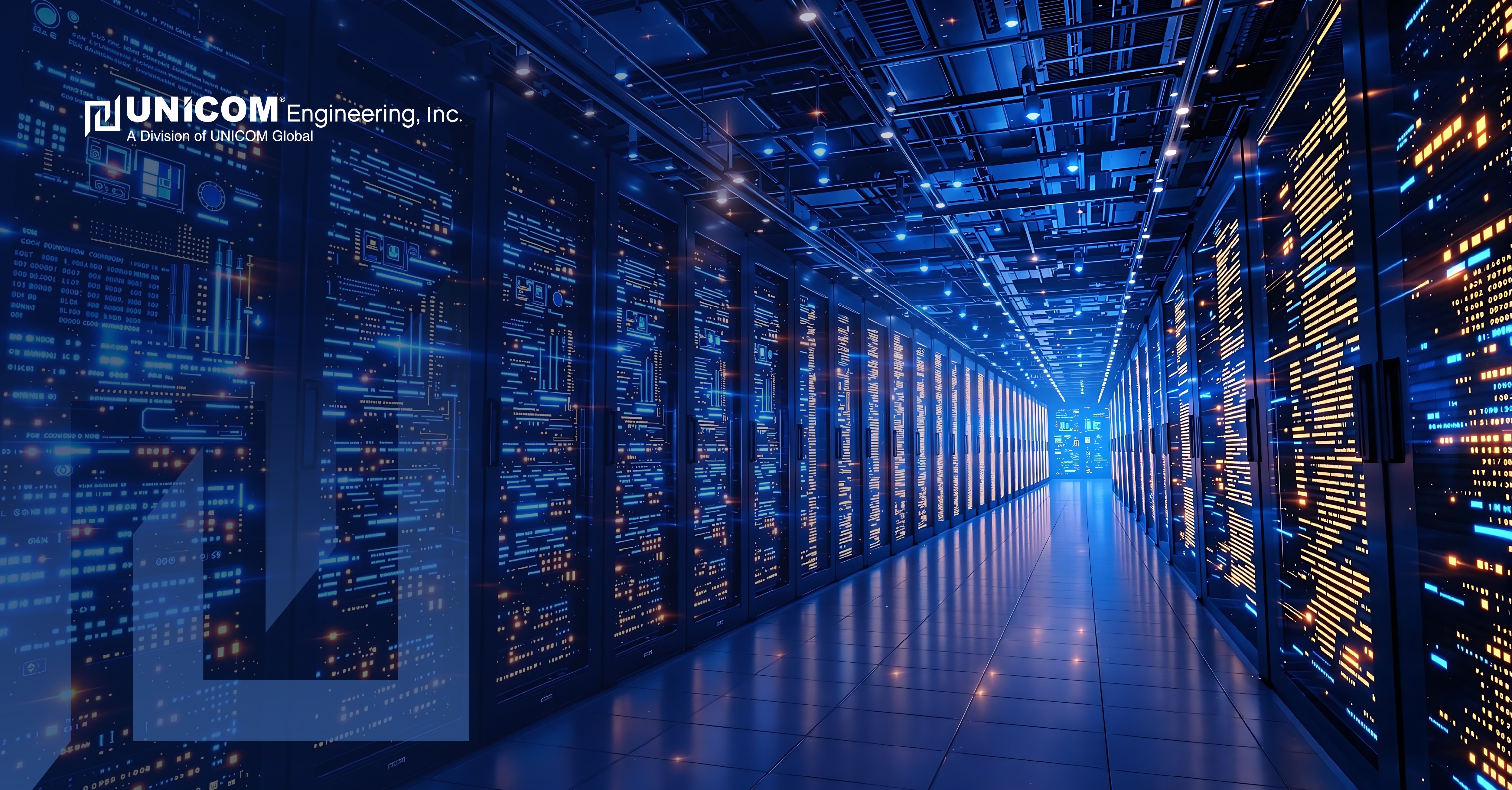The world of data centers is undergoing a seismic shift, driven by the explosive growth of artificial intelligence (AI). At the same time, organizations face constraints around power, water, and cooling. Meeting these demands requires reimagining the very core of data center infrastructure. That’s why UNICOM Engineering builds on Dell Technologies’ platforms to deliver AI-ready solutions that address these challenges head-on. Modernizing a data center for AI requires key infrastructure upgrades—especially in compute density, networking, and cooling—to ensure seamless, scalable performance.
Why Do Data Centers Need to Change for AI?
AI workloads aren’t just bigger—they’re fundamentally different. Generative AI, deep learning, and large language models demand:
- High power density - racks packed with high-performance GPUs, not just CPUs.
- Massive power and cooling capacities - far beyond what traditional setups can handle.
- Ultra-fast, low-latency networking - to shuttle massive datasets in real time between clusters of AI accelerators.
Traditional air-cooled data centers simply can't keep up. The future of AI-ready infrastructure is about supporting high-bandwidth, low-latency east-west and north-south traffic, dense GPU racks, and sustainable operations that don’t send your energy bills through the roof.
Infrastructure Must-Haves for AI
Modernizing an AI data center involves more than swapping out a few servers, but it doesn’t always require a full rebuild. Key components include:
CPU/GPU Clustering AI workloads thrive on parallelism. That means multiple GPUs, CPUs, and accelerators working together at unprecedented speeds. Today’s AI clusters often include hundreds of GPUs per rack, requiring a rethink of power delivery, cooling, and rack design—plus the flexibility to scale without bottlenecks.
High-Bandwidth Networking Legacy networks built for CPU-based traffic can’t match AI’s relentless data flow. AI infrastructure demands:
- High-bandwidth switches
- Fiber connectivity
- Optimized layouts to reduce network hops
This enables rapid east-west (server-to-server) and north-south (external-to-internal) data movement—critical for real-time AI performance.
UNICOM Engineering’s Enhanced Cooling: Taming the Heat of AI
One of the biggest bottlenecks in AI infrastructure is heat. As GPU and CPU power requirements soar—often exceeding 350 watts and reaching up to 1,000 watts per GPU in advanced deployments—traditional air cooling quickly hits its limit. That’s where UNICOM Engineering’s advanced cooling solutions come in.
Direct to Chip Liquid Cooling (DCLC) DCLC delivers coolant directly to the hottest components—CPUs, GPUs, and accelerators—efficiently pulling heat away at the source. This enables denser compute without over-engineering the entire room’s cooling capacity.
Immersion Cooling For the densest, most power-hungry environments—like next-gen AI research or hyperscale deployments—immersion cooling is the answer:
- Servers are fully submerged in dielectric (non-conductive) fluid
- 100% of generated heat is captured and removed
- Power Usage Effectiveness (PUE) often drops below 1.1, meaning nearly all the energy goes to computing, not cooling
UNICOM Engineering makes the transition seamless with end-to-end services: platform validation, design, global support, and integration with the hardware and brands you already trust. Their ISO-certified build process, rack-level integration expertise, and global deployment reach ensure consistent, high-quality delivery of immersion-ready platforms—designed to meet the demands of AI infrastructure at scale.
Practical Steps for an AI-Friendly Transition
Modernizing for AI can be complex, but it doesn’t have to be overwhelming. Here is how to get started:
- Assess your facility: Map out your current power, cooling, and network capacity. Identify gaps.
- Start with a Pilot: Test liquid or immersion cooling on strategic workloads or high-density racks.
- Partner Up: Collaborate with solution providers like UNICOM Engineering to simplify design and integration.
- Upgrade in Phases: Start small and scale logically, migrating workloads, retrofitting racks, and expanding bandwidth.
- Embrace Sustainability: Build with efficiency in mind, to future-proof operations and manage energy costs.
- Train Your Team: Ensure IT staff are equipped to manage new tools, cooling systems, and clustering technologies.
How to Get Started
Thanks to innovations in clustering, high-bandwidth networking, and liquid cooling, many AI-ready upgrades can be implemented within your existing facility. With partners like UNICOM Engineering and Dell Technologies paving the way, and practical steps to guide your journey, you can future-proof your infrastructure and seize the opportunities of the AI era.
Ready to modernize your AI data center infrastructure? Contact UNICOM Engineering today.
